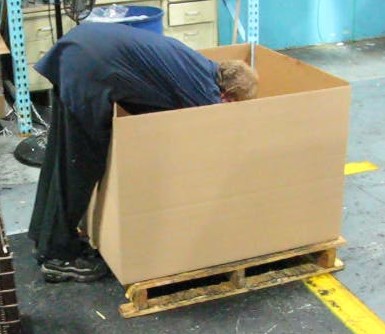 |
 |
| Before: Extreme bending, slow | After: Tilters, easier and faster |
Principles affected
Related pages
An alternative is to useContainers with drop down sides in combination with Lifts
Workstations
Background
A very common problem throughout all industry is bending into deep containers. The strain on the back in doing so can be excessive, considerably increasing the risk of back injuries. Furthermore, bending to place or retrieve materials takes extra time and thus is a drain on productivity.
Objectives
Improve working position and minimize bending and reaching by raising and tilting the container to improve access.
Ideas and Options
Low cost
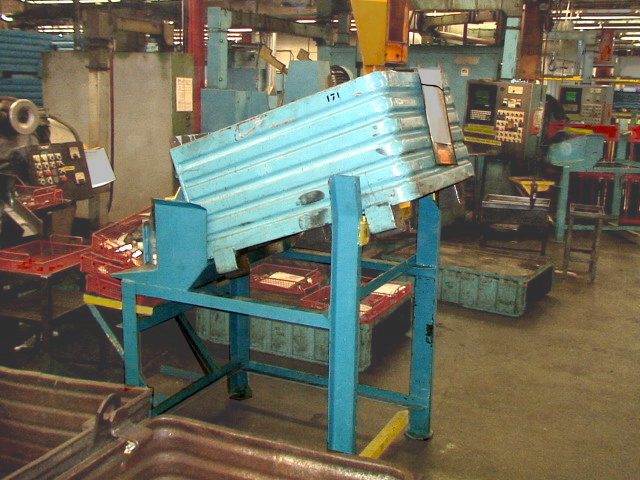 |
| Inexpensive, homemade tilted stand |
An inexpensive approach to tilting a container is to make a special type of stand. As shown in the photo above, one end is lower than the other, with the lower end at the employee’s work station. When a fork lift truck delivers the full container and as the forks are lowered, one end of the container hits the upper portion of the stand first. As the forks continue to drop, the other end of the container eventually rests at the lower end, thus putting it at a slant as shown above.
Note that in this particular example, the container is used for small parts that tumble rather easily. Thus, there is a chute at the lower end, which accounts for the bulky-looking configuration. Without a chute, the stand would have a simpler design and would probably be lower.
The main advantage of this approach is low cost. The disadvantages are (a) that it may still require some reaching, and (b) a forklift truck is required to place the container in the stand.
Standard tilters
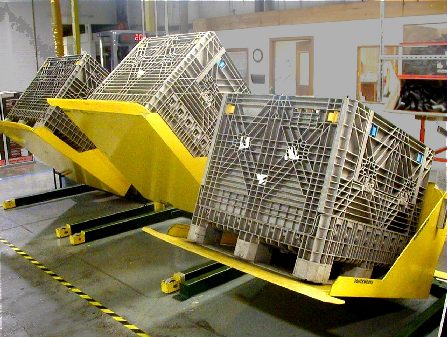 |
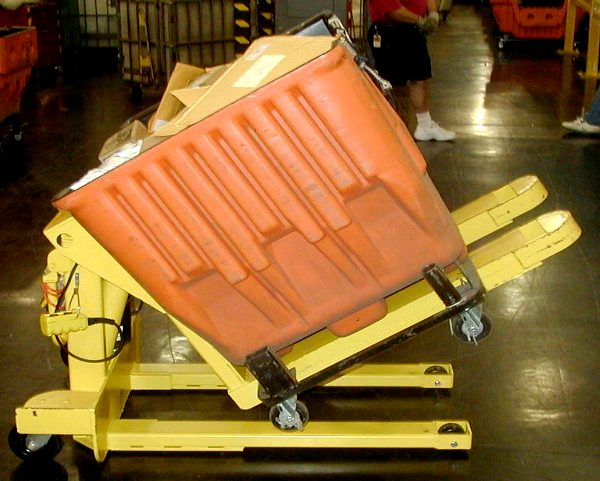 |
| Two styles of tilters | |
Many tilters pivot on a single hinge to provide the tilt. As shown in the above examples, in the down position the load surfaces are flush with the floor. In the version at left, a pallet jack can be used to handle the containers. In the version at right, a hamper-style cart is wheeled over the forks.
Lift and tilt
 |
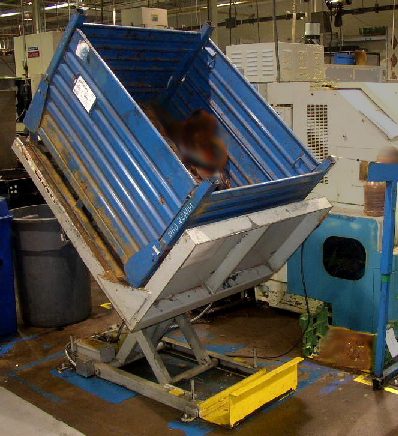 |
| Tilters combined with scissors lifts (left:www.americanlifts.com) | |
Some tilters also incorporate a scissors lift to provide height elevation as well as the tilt.
Cart version
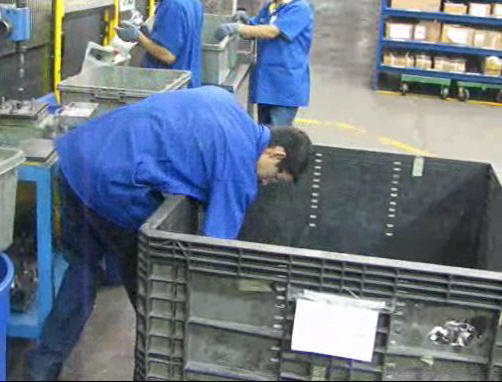 |
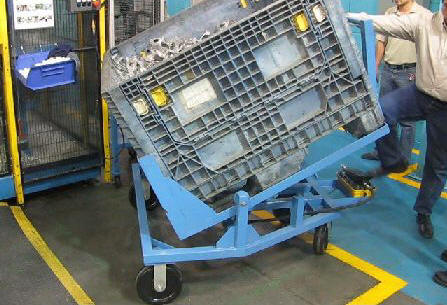 |
| Before: Deep bend | After: Powered tilter |
This example shows a large cart designed with an integrated power tilter (developed and fabricated in-house). The advantage of this approach is that the heavy container can be loaded by forklift truck in the shipping area, then the cart pulled into position in the work area. Thus, there is no need for a forklift truck in work areas.
Potential hazard
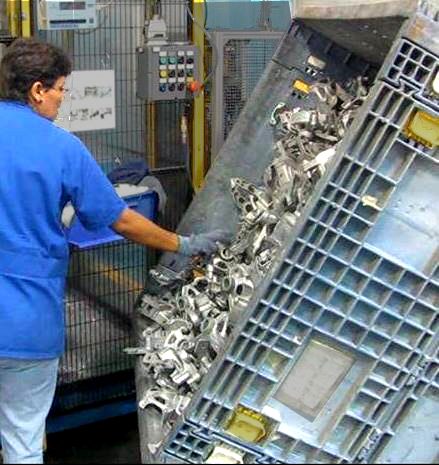 |
| Potential tumbling of materials |
A potential hazard associated with tilting is that the materials in the containers may unexpectedly tumble as the container is raised or as some materials are removed. A particular issue is undermining, that is, removing materials from the lower portion first.
Removal must be done carefully, picking from the top first and avoiding tilting too steeply for the load. Straps and barriers can also be used to hold back any materials that may tumble.
